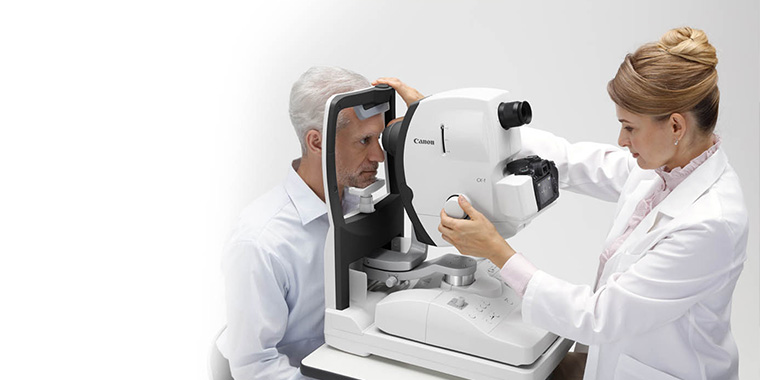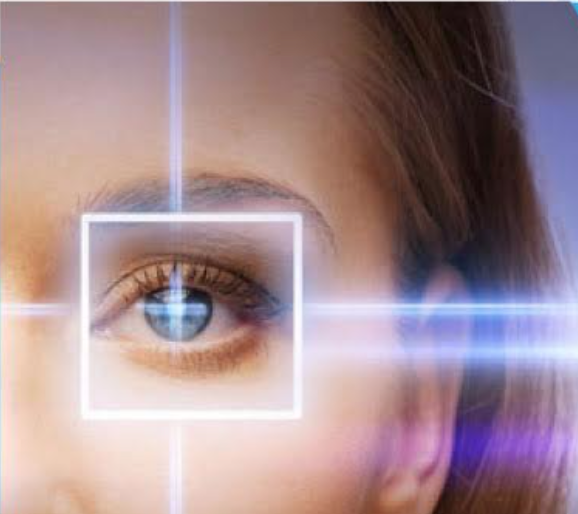Exploring the State-of-the-Art Technologies Made Use Of for Identifying and Treating Eye Conditions
In the world of ophthalmology, the development of technology has significantly improved the tools offered for identifying and dealing with different eye problems. From innovative imaging technologies that offer in-depth insights right into ocular frameworks to robotic-assisted operations that provide unparalleled accuracy, the landscape of eye care is regularly developing. With the assimilation of expert system in diagnostics, gene treatment innovations, and online reality rehab, the opportunities for enhancing person outcomes are increasing at a rapid speed. The merging of these advanced modern technologies holds the promise of reinventing the field of ophthalmology, using brand-new avenues for customized and reliable treatments.

Advanced Imaging Technologies
Advanced Imaging Technologies have reinvented the field of ophthalmology by supplying specific and comprehensive visualization of the eye frameworks. Optical Coherence Tomography (OCT) sticks out as a key innovation in this world. OCT utilizes light waves to catch high-resolution cross-sectional photos of the retina, permitting the identification of minute architectural changes. This non-invasive method help in the very early discovery and monitoring of different eye problems such as macular deterioration, diabetic retinopathy, and glaucoma.
Moreover, Fundus Digital photography is an additional essential tool in sensory imaging. This method includes catching in-depth photos of the rear of the eye, consisting of the retina and optic disc. Fundus Digital photography aids in recording the development of eye conditions, reviewing therapy efficiency, and enlightening patients about their eye health.

Robotic-Assisted Procedure
Robotic-assisted surgeries have actually considerably advanced the capacities of ocular surgical procedure, introducing a brand-new period of accuracy and performance in dealing with numerous eye problems. By incorporating robotic innovation into surgeries, ophthalmologists can achieve unrivaled accuracy and control, leading to boosted person end results.
Among the main benefits of robotic-assisted surgery in ophthalmology is the boosted mastery and stability it provides to cosmetic surgeons. The robot arms can execute exact motions with a high degree of precision, enabling delicate procedures with marginal invasiveness. This level of precision is specifically helpful in surgical treatments involving the retina, where also small errors can have substantial ramifications for a client's vision.
Furthermore, robotic-assisted medical systems offer real-time imaging and feedback to the specialist, enabling them to make enlightened decisions during the treatment. This technology boosts the cosmetic surgeon's situational recognition and enables for adjustments to be made without delay, guaranteeing optimum results for the person.
Expert System in Diagnostics
With the evolution of innovative technologies improving surgical precision in ocular procedures, the assimilation of Expert system in diagnostics has actually emerged as an essential growth transforming the area of eye care. Expert System (AI) algorithms are being significantly utilized to examine complex data from imaging modern technologies like optical comprehensibility tomography (OCT) and fundus photography to help in the very early detection and precise medical diagnosis of numerous eye conditions. These AI systems can effectively recognize patterns and anomalies in images that may not be noticeable to the human eye, making it possible for quicker diagnosis and treatment preparation.
AI algorithms can also anticipate illness progression, suggest individualized therapy strategies, and examine the performance of treatments. By enhancing the analysis procedure, AI not only improves the effectiveness of eye care professionals but also improves patient outcomes by enabling prompt treatments. As AI have a peek here remains to development, its function in diagnostics is expected to expand, offering brand-new opportunities for very early intervention and customized treatment in the area of ophthalmology.
Genetics Therapy Developments
In the realm of ocular innovations, current strides in gene therapy technologies have actually stimulated significant passion amongst researchers and healthcare specialists alike. Gene therapy holds tremendous pledge in transforming the treatment of numerous eye conditions by targeting the underlying hereditary causes. By presenting genetic material right into cells to compensate for uncommon genes or to provide a missing gene, genetics treatment uses a customized method to dealing with acquired eye disorders such as retinitis pigmentosa, Leber hereditary amaurosis, and others that were previously considered untreatable.

As research study in genetics treatment continues to advance, the capacity for tailored therapies for a larger variety of eye problems grows, offering brand-new hope for people with hereditary eye diseases.
Digital Truth Rehabilitation
Digital truth recovery has actually emerged as a sophisticated method in enhancing the healing and rehabilitation procedures for individuals with numerous visual problems. refractive surgeries in al. By mimicing real-world settings through immersive modern technology, virtual truth offers a special platform for vision therapy and recovery. This innovative technique enables individuals to participate in interactive exercises and activities made to improve aesthetic skill, depth understanding, eye control, and overall aesthetic performance
One key advantage of digital reality rehabilitation is its capability to tailor therapy programs based on the certain demands and abilities of each client. Via real-time responses and monitoring, health care experts can track progression, adjust interventions, and supply tailored Website care to optimize results. In addition, digital reality technology can produce a regulated and secure room for people to practice visual tasks, conquer difficulties, and develop confidence in an online setup prior to transitioning to real-world circumstances.
Verdict
Finally, the innovations in imaging technologies, robotic-assisted surgeries, synthetic intelligence diagnostics, gene therapy innovations, and virtual fact recovery have actually dramatically boosted the medical diagnosis and therapy of eye problems. glaucoma service near me. These modern modern technologies have actually transformed the field of ophthalmology, permitting even more exact and effective treatments. As modern technology proceeds to progress, the future of eye care looks promising with the possibility for a lot more ingenious solutions to boost individual results
In the realm of ophthalmology, the advancement of modern technology has significantly boosted the devices available for detecting and dealing with various eye problems. Fundus Photography assists in recording the progression of eye conditions, examining treatment efficiency, and informing patients concerning their eye health and wellness.
Fabricated Intelligence (AI) algorithms are being increasingly made use of to evaluate intricate data from imaging technologies like optical coherence tomography (OCT) and fundus digital photography to help in the very early detection and exact diagnosis of numerous eye conditions.In verdict, the advancements in imaging modern technologies, robotic-assisted surgical procedures, fabricated intelligence diagnostics, gene treatment innovations, and online reality recovery have significantly enhanced the medical diagnosis and treatment of eye conditions. As modern technology continues to progress, the future of eye treatment looks promising with the capacity for also more innovative options to boost patient results.